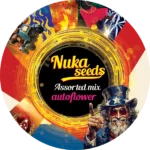English
The history of bongs
The word ‘bong’ is thought to have been derived from the Thai word ‘baung’, which traditionally refers to a round wooden pipe made of bamboo and has also taken on the modern definition of a cylindrical smoking pipe. Some have traced the use of a bong to filter and cool smoke back to the Chinese Ming Dynasty. According to other accounts, the bong was used in Africa, where tribes stuck earthen bongs into the ground, using the same principles as modern bongs. There are even reports of ancient bongs made of pure gold used by a nomadic warrior people in what is now Russia.
Bongs are also closely related to the hookah, a type of water pipe generally used for smoking flavoured tobacco. Water pipes use a hose as a mouthpiece and can be designed so that several people can enjoy the smoke from a single pipe. Today, hookahs can take many shapes and sizes, but the most common versions are mouth-blown from glass by artists who combine science and art to create masterpieces that are both beautiful and functional. However, this was not always the case. In the course of its evolution, the bong has also been made from materials such as hand-carved wood, bamboo, ceramics and even plastic. Many appreciate the MacGyver-like ability to shape just about anything into a bong, from Coke bottles to watermelons and everything in between.
Bong parts

The anatomy of a standard bong can be divided into five basic parts:
- bowl
The head is the bulbous attachment into which the dried cannabis flowers are loaded and burned. It is often removable so that it can function as carburettor. - carburetor
The carbureto, is a small hole that allows the user to release smoke from the entire chamber of the bong and complete the draw. The most common type of carburetor in glass bongs is a pull or slide carburetor, which is exposed when the head is removed. - downstem
The “downstem” is the small tube through which the smoke passes from the bowl to the base, where it then percolates through the water. - base
The base is the bottom of a bong and can take many forms depending on the style. A bubble or cup shaped base is often used to form the water chamber where the smoke cools as it passes through the water. - tube
The tube that ends in the mouthpiece is the chamber that fills with smoke after it has been filtered through the water. Other functions, such as an ice pinch, are often integrated into the tube design.
The different types of bongs
Here are a few examples that show how some of the different types of bongs work:
Salvager
The Salvager is designed for efficiency. The smoke first seeps through the showerhead percolator at the end of the “downstem”. Then it travels through the internal recycler, which recycles the smoke for a second diffusion before it reaches the mouthpiece.
Einstein
This bong includes two different styles of percolators. The first is a “honeycomb” perc that recycles the smoke into the second perc, which is called a Swiss perc because of the holes that resemble Swiss cheese that function to diffuse the smoke.
Poseidon
This piece has two separate percolation chambers, both equipped with inverted shower heads. The smoke flows through the shower heads and is continuously dispersed as it passes through the “honeycomb” perc between the individual chambers.
Advantages of smoking from a bong
The main advantage of a bong is that the smoke is cooled and filtered by water, so that an even puff is possible even if a large amount of smoke is inhaled. For those who typically package their marijuana in joints, bongs provide a cooling perforation while retaining the pungent spectrum of aromas and flavours that cannabis produces. Comparing the bong experience to that of a traditional dry pipe, the result is a much smoother draw that is less harsh and easier on the throat and lungs than the hot, dry heat of a hand pipe.
Disadvantages of smoking from a bong
Bongs are not suitable for frequent moving. It is a good idea to clean the bong after each use, or at least pour out the water, which is why bongs are more maintenance intensive than regular pipes.
Related articles :
Published by Sakul
19/02/2023choose and buy cannabis seeds from our offer
our pleasure




























